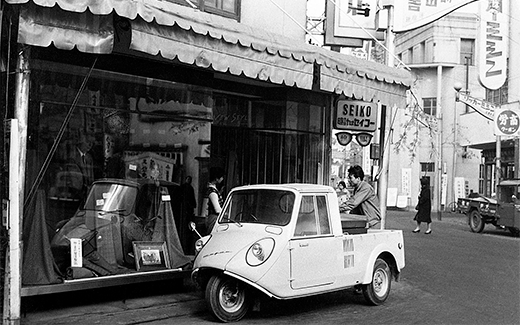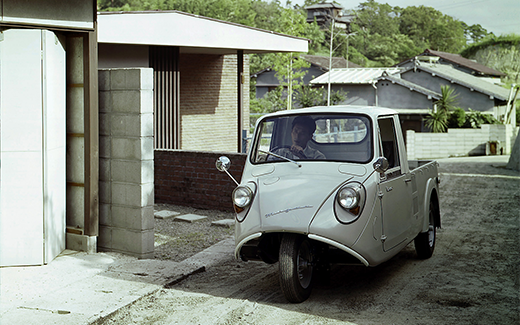born in a secret factory
In 1960, Toyo Kogyo clinched the top position among Japanese automakers in terms of annual production volume, a position they maintained until 1962. One of the leading products that contributed to the top spot was the K360 three-wheel micro-mini truck, known by its nickname “Kesaburo.” Its total production volume over three years exceeded 170,000 units, an impressive figure that accounted for nearly 30% of all Toyo Kogyo’s products.
However, the K360 was a truck that originally would never have seen the light of day.
In the late 1950s, three-wheeled trucks that had once flourished entered a period of decline, losing market share to low-priced four-wheeled trucks. On the other hand, three-wheeled micro-mini trucks, which were one or two sizes smaller than conventional three-wheeled trucks, enjoyed a surge of unprecedented popularity. This was the last boom for three-wheeled trucks in the twilight years of the segment. In response to the boom, calls from within Toyo Kogyo and affiliated distributors to develop three-wheeled micro-mini trucks went through the roof. However, Tsuneji Matsuda, the then president, turned a deaf ear to their calls, saying “These mini trucks are only a passing fad. We have no time to engage in such a detour.” At the time the company was putting all its efforts toward the development of four-wheeled vehicles, particularly passenger vehicles, in order to realize its long desired wish.
Though most believed that without the president’s approval there was no choice but to give up, a small group of engineers did not give in so easily. They were convinced of the market demand for three-wheeled micro-mini trucks and secretly made up their mind to create the best one possible, both to answer the call from distributors and to showcase Toyo Kogyo’s strong technological prowess. Of course as the engineers were going against the president’s intent, they proceeded with all the work for the development of the three-wheeled micro-mini truck in total secrecy. Fortunately, they obtained full cooperation from the foremen of respective prototyping sections, since these foremen were close to the design section chief who took the lead of the secret project. Usually, to make a prototyping arrangement, it was necessary to inform the project planning staff of the formal engineering process number. However, doing so would have given them away. So to avoid this, the secret project team assigned their own codes to the design drawings of the engine, chassis and body. After the completion of the prototype parts the team needed to take even bigger precautions, since the assembly of the vehicle involved extensive work that could easily be spotted and would give away the secret. With this in mind, the team proceeded with the assembly process by surrounding a corner of the factory with board fencing to conceal what was going on.
Through such efforts, they finally completed their compact three-wheeled truck. The secret project team successfully incorporated advanced technologies into the truck, including a circular steering wheel, a steel cabin, and a V-type four-stroke twin-cylinder engine. They were also confident in the vehicle’s cute, but smart appearance. When these engineers showed the newly completed truck to the company’s directors, all of them highly praised the product, saying that it would definitely be popular. The final remaining task for the team was also the biggest hurdle they had yet to overcome — obtaining the president’s approval. The design section chief, who bore responsibility for the secret project, decided to negotiate with the president personally. Although the president looked perplexed, the section chief ushered him to their secret factory. While presenting the prototype to the president, he delivered a fervent speech on its high marketability, and expressed his team’s eager hope to produce the compact three-wheeled truck.
Although President Tsuneji listened to the design section chief in silence, his expression clearly showed that he was satisfied with the vehicle. After a spell of silence, the president left the factory simply saying, “Do as you wish.” However, judging from his attitude, it seemed that he was proud of his subordinates for sticking to what they believed even when acting against him, and that he was surprised at the product’s flawlessness.


Market share of three-wheel micro-mini truck in Japan


